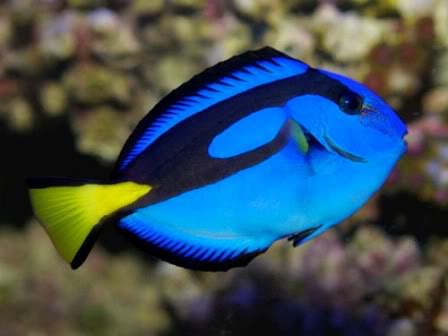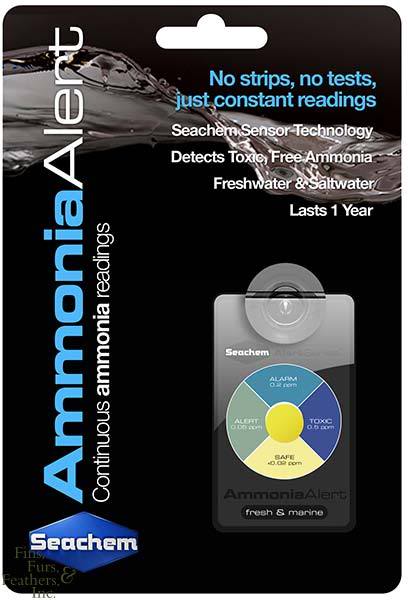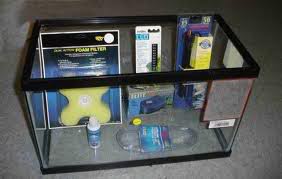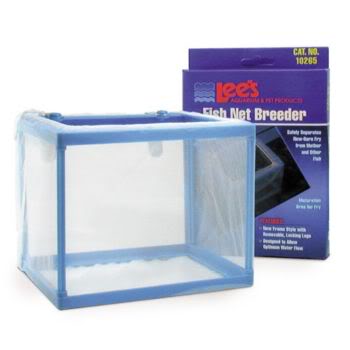revhtree
Owner Administrator
View Badges
Staff member
Super Moderator
Reef Squad
Partner Member 2024
Excellence Award
RGB
Photo of the Month
Article Contributor
R2R TV Featured
Hospitality Award
Article Administrator
Black Friday Sponsor
Partner Sponsor 2023
Industry Professional
My Aquarium Showcase
- Joined
- May 8, 2006
- Messages
- 47,739
- Reaction score
- 86,870

Congratulations! You’ve decided to make an addition to your aquarium. Even though you’re super excited to see that new fish in all its majesty in your tank, you know that you need to quarantine it to keep your tank running disease free. However, how sure of your quarantine method are you? Is your quarantine procedure flawless? If you can’t answer that question with a resounding “YES!†then you should continue reading.
After some unsuccessful quarantine attempts and an infected tank, I decided I would do more research into the topic, and put together this neat little guide for myself, and anyone else who might be interested. While everyone knows that segregating the new fish for a certain amount of time is crucial to the quarantine process, not everyone realizes that they can be accidentally contaminating their tanks. When handling the water in the new purchase, it is important to not put your hands back into your tank, as they may be contaminated with a disease carrier. While washing your hands in between may be effective in removing any traces of disease, you cannot be certain. If you can’t be certain, then why take even the slightest chance? If you have to go between the two, then your best bet is to use two pairs of long gloves, one for your tank and one for the new fish. If you don’t have two pairs of long gloves, it would be common sense to handle your established tank FIRST then move onto the new purchase. Speaking of common sense, since we are being so paranoid about our skin as a vehicle for contamination, it goes without saying that you should never use the same nets, buckets, or containers to go between the two.
How to setup a quarantine tank

The Items you will need
-A 10-20 gallon tank (unless you’re much larger than average fish).
-A heater
-A powerhead to provide proper surface agitation.
-A full water test kit to test for various water parameters.
-A fish net SPECIFICALLY for this tank.
-A small hang on back filter to run a sponge or filter floss. Note: Do not run carbon as it can remove any medication you have added to the water.
-An ammonia alert badge
-A battery backup air pump that will automatically start in the event of a power failure to supply much-needed aeration.

How a saltwater quarantine should be performed
-Always acclimate a new purchase to the water in the quarantine tank, getting the temperature and salinity as close to the quarantine tank as possible.
-Do not place the quarantine tank near the display, as any bubbles popping near the surface may expose your display tank to contaminated water.
-While your fish is in quarantine, regular water changes should be performed.
-From my experience, new fish fare better when you give them a place to hide in the quarantine tank. I prefer to use some PVC elbows.
-For the first couple of weeks, monitor the new purchase very closely for the presence of any parasites, or infections. If any are visible, you should treat with the appropriate medication as per the manufacturer’s recommendations. Once the fish is cleared of the disease, it should be held in quarantine for a minimum of 2 more weeks, and closely monitored to make sure no traces of infection return.
-Once you are sure that the fish is cleared for introduction, acclimate it to the parameters of the display tank (which should already be really close to those of your quarantine), keeping in mind not to introduce water from the quarantine into the display.
-Observe the fish in the display for a week. If signs of disease return, you should net the fish immediately and return it to quarantine. It would be wise to also perform a 25% water change on your display, and monitor its inhabitants for signs of infection.
Tips:
-Since the fish’s immune system is tested during shipment, they are more susceptible to disease. A good acclimation procedure can help reduce their level of stress, and in turn, better their health.
-If you don’t want to risk having to net the fish you just quarantined in your display, you can first introduce it into a breeding container hanging on the side of the tank for quick access if it shows any signs of disease.

-Always keep fresh saltwater made up, and ready to use in case of an emergency. In the midst of a tank emergency, the rush to make water is not going to help you think any clearer.














